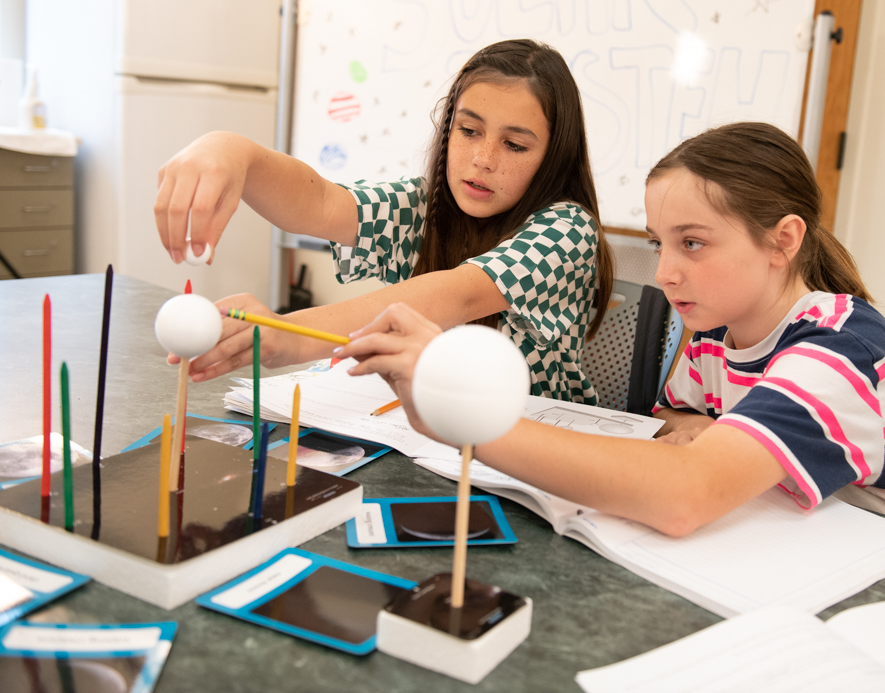
April 8, 2024, marks an extraordinary educational opportunity as a total solar eclipse spans North America, from Texas to Maine. Observers along this path will experience the full solar eclipse length during the totality phase, while those in the contiguous United States, Mexico, and Canada can enjoy a partial view. This event is an ideal backdrop for a range of solar eclipse activities designed to captivate students’ interest in space science.
Seize this Chance to Spark Cosmic Curiosity
The 2024 solar eclipse acts as an open-air classroom, perfect for lessons on celestial mechanics, the science of eclipses, and their significance across cultures and history. It offers a unique platform for hands-on solar eclipse activities that engage students in practical and theoretical science.
Solar Eclipse Activities for Classroom Engagement
Kickstart with Lunar Phases: Utilize the Lab-Aids Analyzing and Explaining Moon Phases kit as a foundational solar eclipse lesson plan component. This prepares students for understanding the solar eclipse through engaging, hands-on activities. Explore the kit here.
Be a Resource for Families: Send home this informational flyer, created by NSTA, to help families know what to expect and how to view the eclipse safely. Note - there are two eclipse pages on this link, April 8th being the second.
Viewing Party: Plan a classroom event for safely observing the solar eclipse, emphasizing the importance of safety. This real-life application of their lessons helps solidify students' understanding.
Post-Eclipse Reflective Learning: Encourage students to engage in a discussion or writing activity about their solar eclipse viewing experience. This reflection can further curiosity and consolidate learning.
Build a Solar Eclipse Model: Use the models in the Analyzing and Explaining Moon Phases kit to challenge students to create a model that shows the solar eclipse's dynamics. This activity supports visual learning and helps students grasp the concept of eclipses.
Explore Eclipse History and Culture: Assign a project exploring how different cultures have historically viewed solar eclipses. This broadens the lesson plan to include social studies, enriching students’ understanding of the event's global impact.
By integrating these solar eclipse activities into your curriculum for the April 8, 2024 eclipse, you can turn this celestial event into an enriching educational journey. This approach underscores the value of combining direct observation with classroom instruction, fostering a deeper appreciation for science and the natural world.
FAQs and Resource Links
When and where can I see the eclipse on April 8th?
The total eclipse enters the United States in Texas around 12:30p, and then travels through Oklahoma, Arkansas, Missouri, Illinois, Kentucky, Indiana, Ohio, Pennsylvania, New York, Vermont, and New Hampshire, finally leaving the northeastern borders of Maine just before 3:00p. Small parts of Tennessee and Michigan will also experience the total solar eclipse. This great tool from NASA allows you to enter a zip code for specific viewing information.
How can we safely view the eclipse?
If you are inside the total solar eclipse path there is a moment when it is fully dark and the Sun is completely blocked that is okay to view without protection. For any time in the partial phases or for locations outside of the eclipse path, there is no time that it is safe to look directly at the Sun. For more detail, visit information on eye safety from the American Astrological Society.
Where can I order eclipse glasses for my classroom?
Be sure to order glasses that meet the ISO 12312-2 safety standard and are not damaged in anyway. The American Astrological Society has put together a list of manufacturers who supply glasses that meet these standards.
Related Kits & Curriculum
Analyzing and Explaining Moon Phases
Classifying Objects in the Solar System
Investigating Light: Reflection and Mirrors
Issues and Science | Solar Systems and Beyond
Issues and Science | Waves
Issues and Science | Energy
EDC: Earth Science